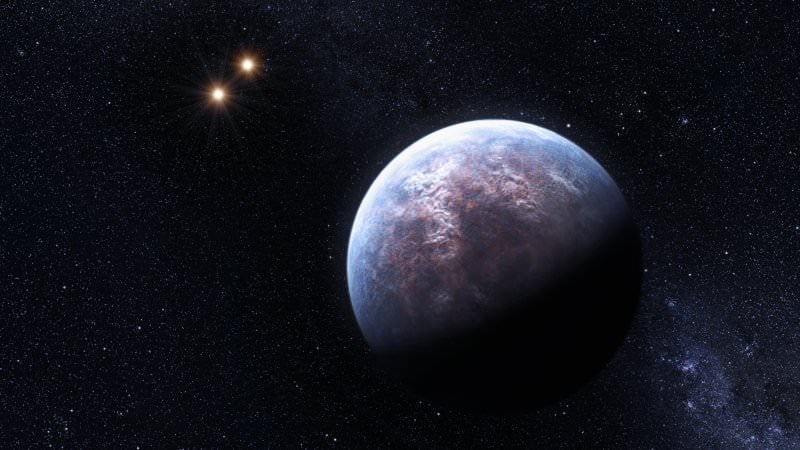[/caption]
Astronomers have found 32 new planets outside our solar system with the High Accuracy Radial Velocity Planet Searcher, better known as HARPS, the spectrograph for the European Southern Observatory's (ESO) 3.6-metre telescope. The number of known exoplanets is now at 406, and HARPS itself has discovered more than 75 exoplanets in 30 different planetary systems. Included in this most recent batch are several low-mass planets – so-called "Super Earths" about the size of Neptune. The image above is an artist's impression of a planet discovered that is 6 times the mass of Earth, which circles the low-mass host star, Gliese 667 C, at a distance equal to only 1/20th of the Earth-Sun distance. Two other planets were discovered previously around this star.
"HARPS is a unique, extremely high precision instrument that is ideal for discovering alien worlds," said ESO astronomer Stéphane Udry. "We have now completed our initial five-year program, which has succeeded well beyond our expectations."
No Earth-like planets were discovered in this group that was announced today at an exoplanet conference in Portugal.
HARPS has facilitated the discovery of 24 of the 28 planets known with masses below 21 Earth masses. As with the previously detected super-Earths, most of the new low-mass candidates reside in multi-planet systems, with up to five planets per system. This new group includes a total of 11 planets with masses between 5 and 21 times that of Earth - and 9 in multi-planet systems -- and increases the number of known low-mass planets by 30%.
HARPS uses the radial velocity technique which measures the back-and-forward motions of stars by detecting small changes in a star's radial velocity as it wobbles slightly from a gentle gravitational pull from an otherwise unseen planet. HARPS can detect changes in velocity as small as 3.5 km/hour, a steady walking pace.
Notable discoveries by HARPS during the past five years include the first super-Earth in 2004 (around µ Ara; ESO 22/04); in 2006, the trio of Neptunes around HD 69830 (ESO 18/06); in 2007, Gliese 581d, the first super Earth in the habitable zone of a small star (ESO 22/07); and in 2009, the lightest exoplanet so far detected around a normal star, Gliese 581e (ESO 15/09). More recently, they found a potentially lava-covered world, with density similar to that of the Earth's (ESO 33/09).
"These observations have given astronomers a great insight into the diversity of planetary systems and help us understand how they can form," says team member Nuno Santos.
Source:
ESO
 Universe Today
Universe Today
